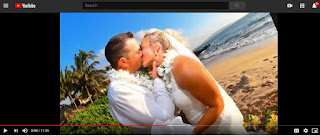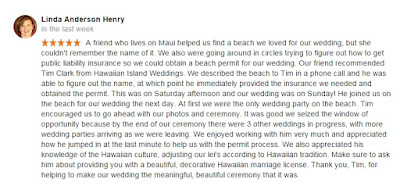Record Number of Whales Sighted During Great Whale Count
MA'ALAEA, HI -- A record number of whales were sighted during the 2008 Great Whale Count on Maui on Saturday, February 23, which recorded a total of 1,726 whale sightings in a three-hour period.
Perfect weather conditions for whalewatching and a growing whale population are thought to be the reasons for the unprecedented number of humpback whale sightings.
"It was absolutely gorgeous out there for the count today," said Dr. Quincy Gibson, Research Director at Pacific Whale Foundation and the coordinator of The Great Whale Count. "The weather was sunny with no clouds, with just a light breeze, little glare and very flat, calm seas -- just ideal for watching whales."
Due to the lack of tradewind activity, volcanic gas ("vog") from the continuing eruption of Kiluea on the Big Island accumulated over Maui throughout the morning, but did not hinder the visibility for the counters.
"It's also important to note that researchers believe that the North Pacific humpback whale population has been increasing steadily over the years, at a rate of about 7% per year," says Gibson. "We could certainly see the results of that population growth today."
The Great Whale Count is an annual event organized by Pacific Whale Foundation that brings together Maui visitors, residents and Pacific Whale Foundation's researchers, educators and other staff, to tally the number of whale sightings and record whale surface behaviors that could be viewed from twelve shoreline observation stations. These counting locations stretched along Maui's south and western shores, from the Ritz Carlton in Kapalua to Pu'u Olai in Makena, and included a site at Ho'okipa Beach on Maui's north shore.
Today's count of 1,726 whale sightings broke the 2006 record of 1,265 humpback whales counted.
The location with the most whale sightings was Pu'u Olai, the hill located behind Makena Beach State Park. Greg Kaufman was stationed there, with Dr. Paul Forestell, Vice President and Senior Research Associate at Pacific Whale Foundation, with six volunteer counters. Between 8:30 and 11:20 a.m., this hilltop group tallied 287 whale sightings.
The next best station for sighting whales was McGregor Point lookout which recorded 281 sightings during the three-hour counting period. Launiopoko Park in Lahaina was the third best counting site, with 249 sightings recorded.
More than 150 people participated in the Great Whale Count. The majority of the counters were visitors, who gave of their vacation time to help count the whales. Pacific Whale Foundation's staff instructed the participants in the methodology of the count, which involved using compasses, binoculars and data sheets.
The counters worked in 20-minute intervals. During the first ten minutes of each interval, they scanned the area extending three miles out from their station, noting the numbers of pods, the numbers of whales in each pod, whether calves were present and the direction in which the animals were moving. They took compass bearings to note the location of the whales on a map. They also recorded data on sea state, percentage glare, wind speed and wind direction.
Immediately following this scan, the counters devoted five minutes to recording significant behaviors, such as breaches, pectoral fin slaps, tail slaps, and peduncle throws. The next five minutes were "rest time" -- and then the scanning cycle was repeated. The same cycles were followed at each of the counting sites.
The count is limited to within three miles of shore, because the accuracy of determining numbers in each pod or group and the sightability of calves diminishes dramatically beyond that point.
Pacific Whale Foundation researchers noted the differences between the results on Maui's leeward side versus the results from the north shore.
"We conducted the Great Whale Count from eleven sites along Maui's leeward side, positioned far enough from each other to ensure no overlap in counts," explained Kaufman.
"On the leeward side, between 8:30 and 11:30 in the morning, during nine 10- minute scans, we documented sightings of 1,667 animals. Averaged across the nine sighting intervals, there were 185 animals seen within three miles of shore, ranging from a low of 156 animals reported at 8:30 a.m. to a high of 220 during the last scan at 11:30 a.m."
"Overall this represents an average of 16.8 whales per site per ten minute observation period," said Kaufman.
"Approximately 5.6% of the whales observed were calves," noted Kaufman.
"Based on these findings, we can assume that there was an average of 185 whales within three miles of Maui's leeward shore throughout the morning, and that this included 163 adults and 12 calves," said Kaufman.
At Hookipa, off Maui's windward side, there were an average of 7 whales sighted per ten minute observation period.
"Pacific Whale Foundation continues to be concerned that insufficient attention is being given by Hawaii Superferry to the number of whales off the windward side," said Kaufman. "Our count today and anecdotal reports of whale sightings along Maui's north shore show that the whales are certainly in the areas where the Superferry is traveling, and are jeopardized by the Superferry's route and operating speed."
"Over the years, we have followed the same systematic counting method for each of The Great Whale Counts," says Anne Rillero, spokesperson at Pacific Whale Foundation. “This lets us compare results from year to year.”
Last year, counters tallied a total of 959 whale sightings during the counting period from 8:30 a.m. to 11:40 a.m. In 2006, there were 1,265 humpback whales counted – the prior record. There were 649 humpback whale sightings recorded during the 2005 count. In 2004, rainy weather caused a disruption in the counting. In 2003, there were 815 sightings tallied. The counters in 2002 reported 673 sightings.
"We are still early in the season," said Greg Kaufman, noting that the number of calves sighted today was relatively low while the number of adult whales was relatively high.
"We are not at the peak of the season yet -- there will be a lot more whales here before the winter is over," he said. "Given that the peak is yet to occur, we want to remind ocean users to operate with utmost care and at slow speeds in areas where whales are present."
About 60% of the population of North Pacific humpback whales migrates to Hawaii each winter to mate and to give birth to calves conceived during last year’s breeding season. The first whales of the season generally appear during the autumn, with the greatest numbers in residence from December through early May. Maui County, comprised of the islands of Maui, Molokai, Lanai and Kahoolawe, is known for the highest concentration of humpback whales in Hawaii.
The Great Whale Count by Pacific Whale Foundation was the first and original annual whale count to take place in Hawaii.
"The Great Whale Count is a tradition we began on Maui back in 1988," says Greg Kaufman, President and founder of Pacific Whale Foundation. "We then expanded the Great Whale Count to take place on Oahu in 1996 in partnership with the Hawaiian Islands Humpback Whale National Marine Sanctuary. In 1998 they changed the name to 'Ocean Count' and took over running it as a Sanctuary-sponsored event."
Pacific Whale Foundation is Maui's oldest and largest marine conservation organization. Pacific Whale Foundation researchers have conducted field studies of humpback whales in Hawaii, Australia, Tonga, Ecuador and other parts of the Pacific since 1980. The Great Whale Count makes it possible for the public to learn more about whale research, by participating in a systematic collection of useful data.
"This is our 18th year conducting the Great Whale Count, says Kaufman. "We are grateful to the public for volunteering -- we couldn't do this without the support of the public."
Pacific Whale Foundation offers a variety of ways for Maui residents and visitors to learn more about whales. In addition to more than 17 whalewatch cruises offered daily, there is a Pacific Whale Foundation naturalist stationed at McGregor Point lookout, on Route 30 between Ma’alaea and Lahaina, from around 8 a.m. to 2 p.m. daily. The naturalist helps visitors locate whales that can be seen from shore.
The Great Whale Count is part of The Great Maui Whale Festival, a two week series of events that celebrate the presence of the humpback whales on Maui. It will conclude on Monay night with a free talk and slide show by Dr. Paul Forestell, on “Regulate or Educate? How Whalewatching Could Save the Whales.” The talk will take place at Pacific Whale Foundation's Discovery Center, downstairs at The Harbor Shops at Ma'alea from 6:00 p.m. to 7:30 p.m. Feel free to bring a snack or brown bag supper. To learn more, visit www.pacificwhale.org.


Comments